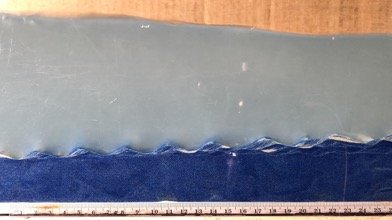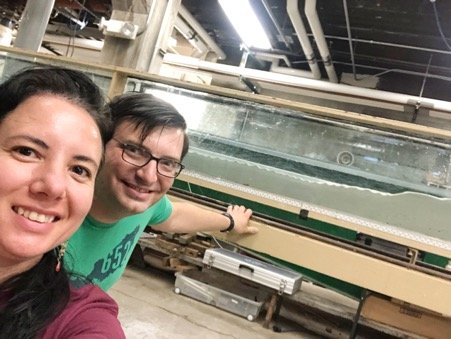Coming Full Circle - Harnessing the power of weathering to remove excess CO2 from the atmosphere

By Sara Polanco
In recent experiments at the St. Anthony Falls Laboratory, a group of researchers from the University of Sydney, Vesta, Colorado College and the University of Minnesota are bringing work around weathering and the mineral olivine full circle.
In 1936, a Ph.D. candidate at the University of Minnesota named S. S. Goldich submitted his dissertation on the prediction of weathering rates of common igneous minerals on the Earth's surface. He discovered that the weathering rate of igneous minerals is controlled at least in part by the order in which they crystallize from a melt, with olivine being the mineral that weathers at the fastest rate.
Weathering is a natural process that reduces CO2 levels in the atmosphere and can be accelerated by deploying olivine in coastal settings to mitigate human-made carbon emissions.
Decades of laboratory research have shown that it may be possible to increase the rate of sediment weathering by intentionally mining, grinding, and spreading olivine on beaches where the increased surface area (from mechanical grinding) and tumbling action of waves results in dissolution rates thousands of times faster than is typically found in nature. This process is called Coastal Enhanced Weathering (CEW) and is an example of a negative emissions technology which may be capable of removing significant amounts of excess CO2 from Earth’s atmosphere if applied at scale (~ 108-109 metric tons per year).
Olivine is considered ideal for applications of CEW because it is a naturally occurring, easily weathered mineral that is inexpensive and widely available. However, one challenge of working with olivine is that this mineral is 26% denser than natural quartz sand and 12% denser than carbonate sand. This difference in density may significantly influence how olivine sand is transported by wave action, currents, and tides in coastal ecosystems, leading to uncertainty about how and whether olivine sand may be successfully incorporated into coastal engineering projects.
To tackle this challenge, a group of researchers led by Sara Polanco, a University of Minnesota alumna, are conducting a series of flume tank experiments at the St. Anthony Falls Laboratory to understand how olivine-supplemented sediments will respond to wave action when deployed into coastal settings.

Project researchers include Dr. Sara Polanco (The University of Sydney), Dr. Stephen Romaniello (Vesta), Dr. Paul Myrow (Colorado College) and SAFL's Dr. Chris Paola.
